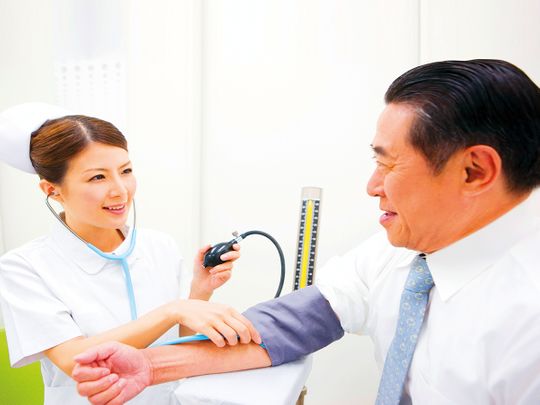
Highlights
The country’s technology has been the benchmark for consumer electronics since the Eighties. Can its medical sector do the same?
With its ageing population causing a shortage of labour and subsequent decrease in the overall size of its domestic market, Japan needs healthcare innovation a little more than most countries. “Innovation is not only a means for incremental growth for the existing businesses of Japanese companies, but a requisite for survival,” says Paul Mori, Project Director at Intralink, a business development consultancy specialised in East Asia.
Mori, who is based in Intralink’s Tokyo office and is a member of the company’s Medtech and Life Sciences Group, which helps global firms grow in Japan’s healthcare sector, highlights that the top ten Japanese pharmaceutical firms have established open innovation initiatives that extend beyond the typical pharma remit, encompassing new digital health services and medical devices. “Similarly, medical device manufacturers like Olympus, Konica Minolta, Terumo and Nipro have made significant investments in open innovation programmes. There are also a number of non-healthcare companies, such as telecoms and utility giants, that are actively seeking partnerships with medtech start-ups to break into the market.

"IoT and AI are still in the early stages of adoption in the Japanese healthcare sector — and this poses big opportunities for international firms.”
“Open innovation – as opposed to closed innovation, where companies try to develop everything in-house – is the optimal way for these companies to create entirely new business lines and stay competitive in the midst of such disruptions.”
For Zeeshan Nasir, Area Trade Marketeer at Omron Healthcare Middle East, Japan’s ambitions to be a leader in healthcare delivery has seen advancements in telemedicine, home care and solutions that enable the early detection of strokes and other serious conditions. “The Japanese government has also introduced new regulations offering guidelines for telemedicine and telehealth monitoring, even focusing on blood pressure [BP] monitoring on the go, which allows remote examinations to be covered under reimbursement schemes.”

The Japanese government has also introduced new regulations offering guidelines for telemedicine and telehealth monitoring, even focusing on blood pressure [BP] monitoring on the go, which allows remote examinations to be covered under reimbursement schemes.
One of Omron’s BP monitors, Evolv, is made in Japan. It’s also the company’s first Alexa-compatible medical device. “It allows users to find out about their cardiovascular health quickly by simply saying phrases like ‘Alexa, what was my blood pressure average this month?’,” explains Nasir. “This allows Alexa to compare readings across dates and times of the day, and the latest reading against the last highest or lowest recorded reading.”
IoT and AI
While there’s been much excitement about the potential of the internet of things (IoT) and AI, we still need to wait and see what they can do in healthcare. “IoT and AI are still in the early stages of adoption in the Japanese healthcare sector — and this poses big opportunities for international firms specialising in these fields,” says Mori.
“For IoT, we’re gradually seeing more connected equipment and devices in the market, such as smart hospital beds and wearable devices for monitoring individuals’ health. There are now corporations in Japan that lend wearables to employees to promote better health management and facilitate increased productivity. Other examples of healthcare-related IoT solutions in Japan include Abbott’s FreeStyle Libre, a patch-type blood glucose monitoring solution for diabetics, and the wearable-enabled insurance service Vitality developed by Discovery and offered in Japan via Sumitomo Life Insurance. These originate from foreign markets, but they’re helping speed up the adoption of similar tech in Japan.
“With AI, we’re seeing a lot of activity, especially in image processing. Japan has a strong medical imaging industry, and there’s great potential for artificial intelligence to assist doctors in identifying and analysing diseases at earlier stages. There’s also an initiative underway where the government, with the help of the private sector and academia, is planning to launch ten AI hospital” by 2022. This is designed to mitigate the challenges of exploding healthcare expenditure and an acute shortage of physicians by taking advantage of the latest advances in AI.”
Government initiatives
The Japanese government is taking a number of steps to push healthcare innovation. “For example, it established the Japan Agency for Medical Research and Development (AMED) in 2015 to act as a control tower to direct integrated research,” explains Mori. “The agency’s goal is to achieve the world’s healthiest and longest-living population by fostering pharmaceuticals and medical devices as strategic industries in the economy.
Shinzo Abe’s government has also created support networks for medical device development, provided clinical trial test sites and hosted conferences to facilitate a strong R&D environment in the medtech sector. It is also pushing telemedicine as a important component of Japan Vision: Health Care 2035, he adds. The 2017 Medical Big Data Law details provisions for handling personal medical data, and the partial liberalisation of telemedicine in 2018 allowed online consultations to be covered under health insurance.
Japan’s Pharmaceutical & Medical Device Agency is setting approval criteria for solutions using AI, and the government plans to introduce guidelines on AI-based solutions in clinical settings. Forums such as the Healthcare IoT Consortium are discussing ways to harness emerging technologies from within and outside Japan.
“There are further steps needed to fuel the growth of the industry, such as clarifying the delineation between medical devices and consumer products and creating a separate device category for digital health to expedite registration processes. But we’re certainly seeing meaningful steps in the right direction.”













